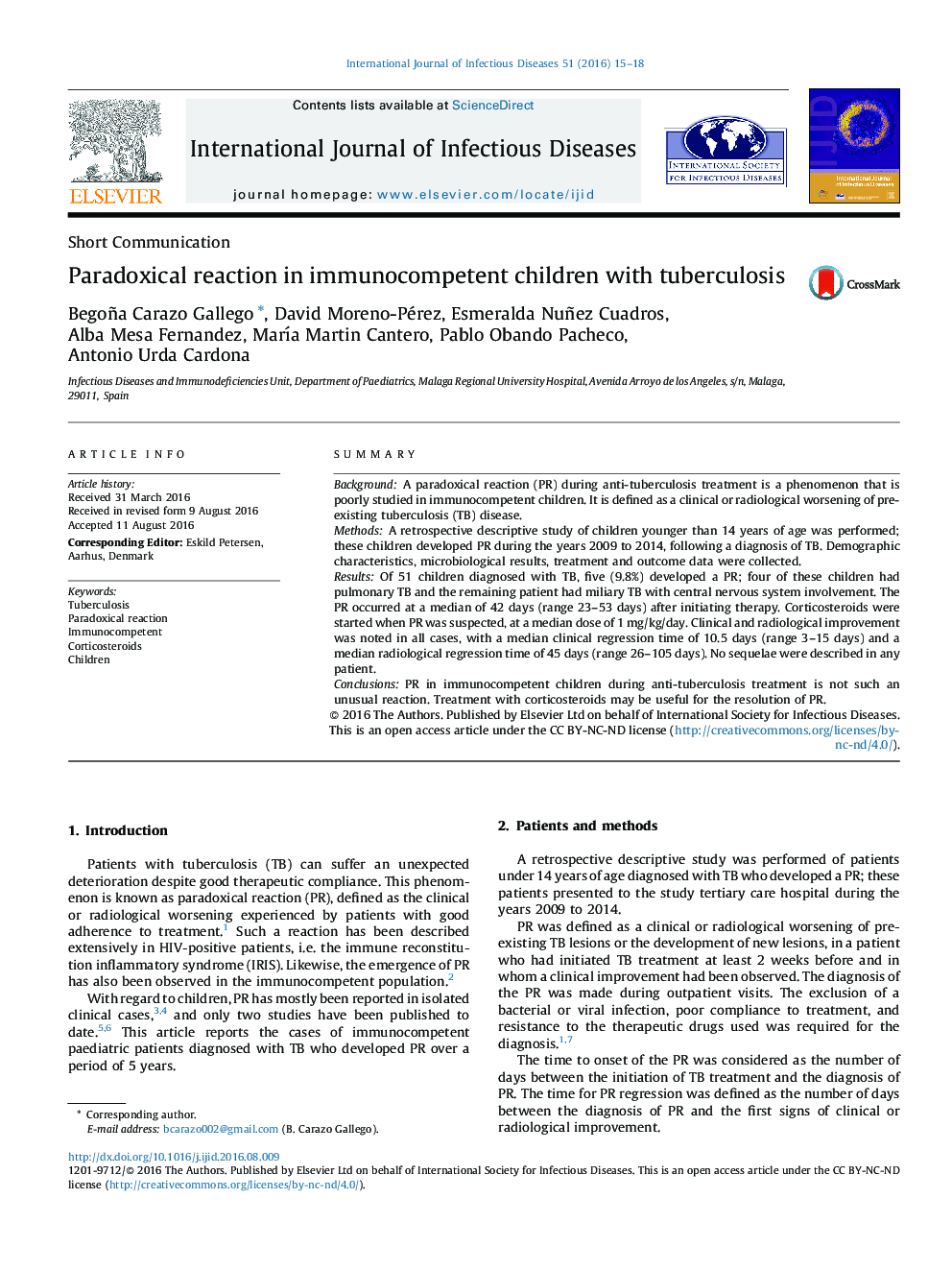| Article ID | Journal | Published Year | Pages | File Type |
|---|---|---|---|---|
| 3361588 | International Journal of Infectious Diseases | 2016 | 4 Pages |
•A paradoxical reaction (PR) is not an unusual occurrence in immunocompetent children with tuberculosis (TB); PR is defined as the clinical or radiological worsening of pre-existing TB lesions in a patient who has initiated anti-tuberculosis treatment.•During the study period, five of 51 children diagnosed with TB matched the definition of PR (9.8%), consistent with the results of previous studies.•There is no consensus regarding the use of corticosteroids in the treatment of PR.•Steroid treatment was administered to all of the patients in this study, and all had a favourable outcome.
SummaryBackgroundA paradoxical reaction (PR) during anti-tuberculosis treatment is a phenomenon that is poorly studied in immunocompetent children. It is defined as a clinical or radiological worsening of pre-existing tuberculosis (TB) disease.MethodsA retrospective descriptive study of children younger than 14 years of age was performed; these children developed PR during the years 2009 to 2014, following a diagnosis of TB. Demographic characteristics, microbiological results, treatment and outcome data were collected.ResultsOf 51 children diagnosed with TB, five (9.8%) developed a PR; four of these children had pulmonary TB and the remaining patient had miliary TB with central nervous system involvement. The PR occurred at a median of 42 days (range 23–53 days) after initiating therapy. Corticosteroids were started when PR was suspected, at a median dose of 1 mg/kg/day. Clinical and radiological improvement was noted in all cases, with a median clinical regression time of 10.5 days (range 3–15 days) and a median radiological regression time of 45 days (range 26–105 days). No sequelae were described in any patient.ConclusionsPR in immunocompetent children during anti-tuberculosis treatment is not such an unusual reaction. Treatment with corticosteroids may be useful for the resolution of PR.
